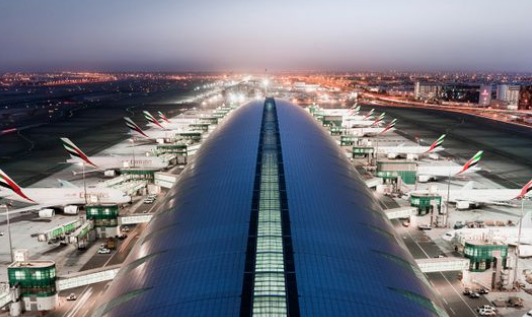The Al Maktoum International Airport, set to become the world’s largest by 2030, embodies Dubai’s commitment to innovation and efficiency. With cutting-edge technology and state-of-the-art facilities, the airport will revolutionize global travel, offering a seamless and unparalleled passenger experience. Not only will it accommodate a massive influx of passengers and cargo, but it will also prioritize sustainable practices to minimize environmental impact. By fostering connectivity between continents and attracting top airlines, Dubai is solidifying its position as a global aviation powerhouse. The airport’s design not only promises efficiency but also a sustainable and prosperous future for generations to come, shaping the aviation industry for decades.
From a modest 42,000 passengers in 1961 to a bustling hub handling 7.5 million passengers monthly is a testament to its remarkable growth. With 95 airlines connecting 254 cities, the airport has become a pivotal global travel hub under the visionary leadership of CEO Paul Griffiths. The recent milestones of exceeding 2019’s traffic and restoring passenger volumes showcase Dubai Airport’s resilience amid challenges. The planned capacity expansion to 120 million passengers per year signifies Dubai Airport’s commitment to innovation and growth. As the airport continues to evolve, it remains a symbol of Dubai’s unwavering dedication to excellence in aviation and passenger experience.
The completion of Phase One marks a significant milestone in the airport expansion project, with the implementation of key infrastructure to enhance operational efficiency and passenger experience. The addition of two 4.5km runways equipped with advanced instrument landing systems sets the stage for seamless landings even under challenging visibility conditions. The new 165,000m terminal and satellite concourses boast a combined capacity of 100 million passengers annually, addressing the growing demand for air travel. The introduction of six new train tracks, strategically connecting terminals and concourses, signifies a commitment to seamless connectivity and convenience for travelers. As the airport gears up for increased traffic, these developments are crucial in ensuring optimal service delivery and passenger satisfaction.
Phase Two of the airport expansion project is crucial in meeting the growing demand for air travel. With plans to increase passenger handling capacity to 65 million per year, the addition of two more runways, concourses, and a terminal demonstrates the scale of the development. The expansion to the east side will improve accessibility and streamline passenger flow with the construction of six new train tracks and stations. This ambitious project showcases the dedication to enhancing airport infrastructure and providing a seamless travel experience for passengers. The intricate planning and execution involved in such a massive undertaking highlight the airport industry’s commitment to meeting the needs of travelers worldwide.
With the expansion plans underway, the airport is gearing up to become a bustling hub for travelers worldwide. The increased built-up area and enhanced facilities are set to elevate the passenger experience to new heights. The addition of more check-in counters, boarding lounges, and border control counters equipped with the latest technologies will streamline the passenger flow and minimize wait times. The focus on safety is evident with the expansion of immigration transfer and security areas. The future enhancements, including new baggage screening areas and carousels, will further boost the efficiency of operations.
Once completed, the airport is poised to cater to a staggering number of passengers annually, solidifying its status as a top-tier travel hub.







